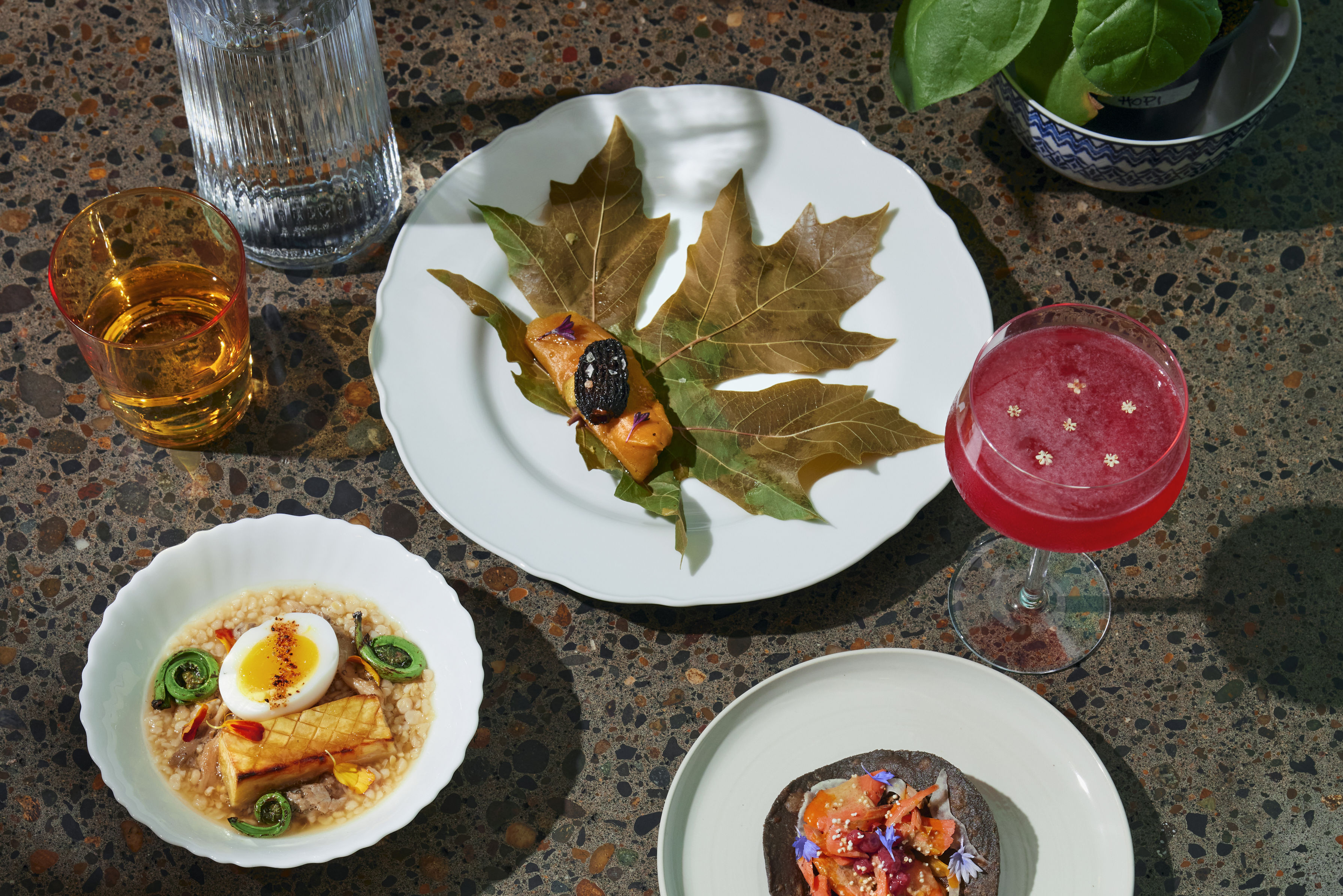This Forthcoming Mariscos Pop-Up Hand-Grinds Its Masa
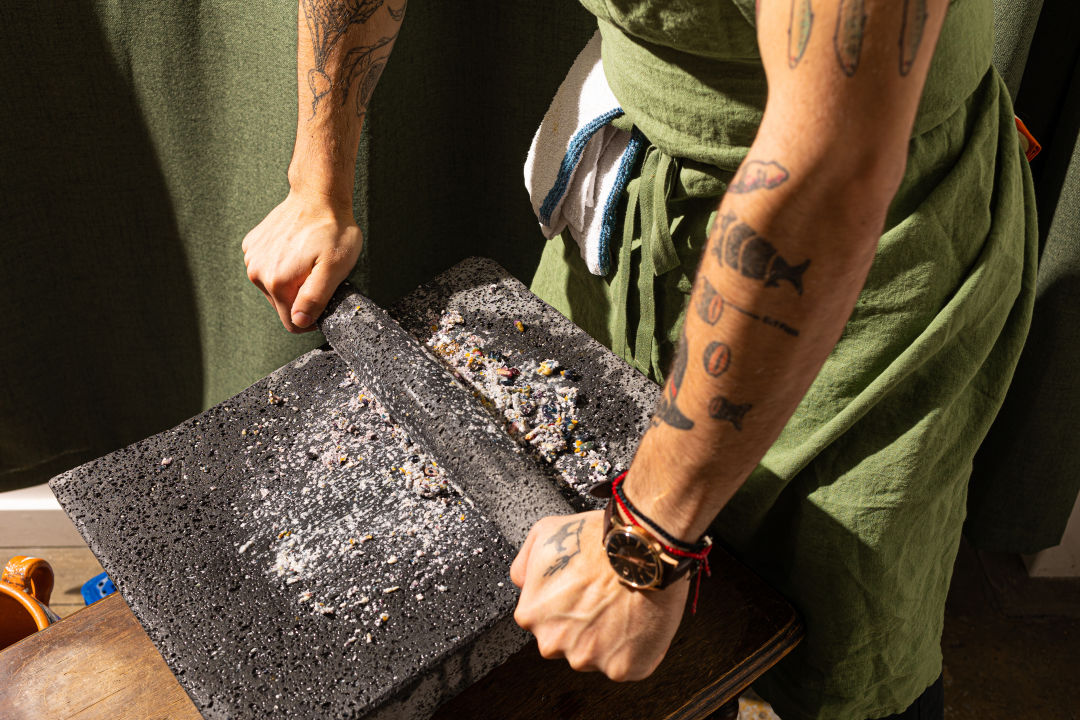
Image: Michael Novak
In the open-air restaurants of Mazatlán, petals of thinly sliced shrimp, milky-white from a citrus bath, lay tangled among strips of onion. They come on tostadas, or among half-moons of cucumber or avocado, or freckled with chiltepín, pearl-size red chiles that could almost be mistaken for currants. This is aguachile, perhaps Sinaloa’s most famous seafood dish, often compared to ceviche.
It’s a dish chef Jose “Lalo” Camarena ate in abundance during his childhood in Mexico, served at mariscos shops alongside dishes like ceviche, tacos gobernador, and Sinaloan-style shrimp cocktail. Years later, it became a common source of inspiration while designing tasting menus as the executive chef of Northwest Portland’s fine-dining restaurant República: Japanese-inflected variations with tobiko and mirin, steak tenderloin tartare with cucumbers and chiltepín.
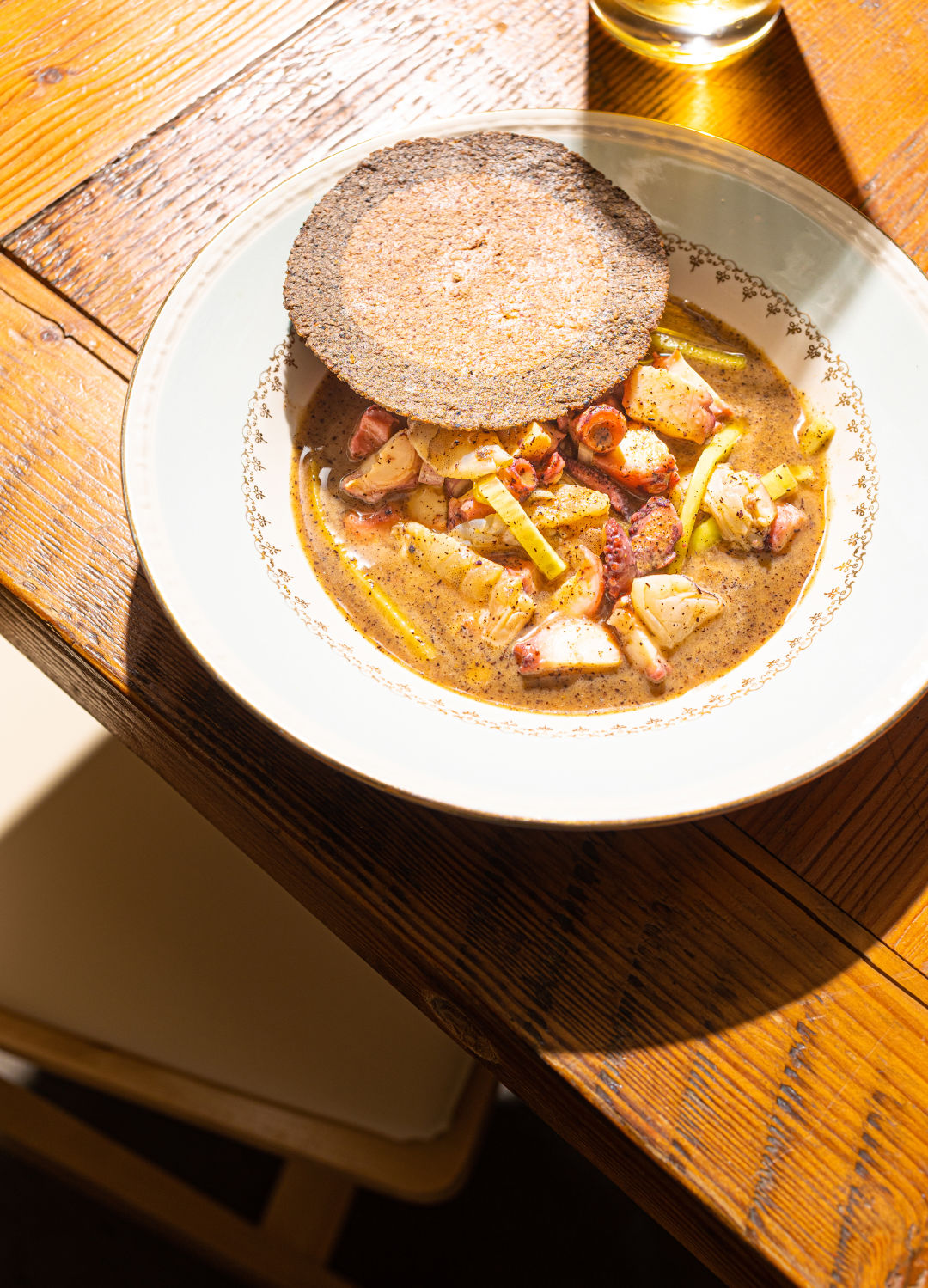
Image: Michael Novak
It was while working at República, however, that he also fell for the food and culinary techniques of other parts of Mexico—Puebla, Oaxaca. He traveled through the country, learning about the processing of masa and other dishes using a metate and metlapíl, a cradle of a lava rock grinding stone and the cylindrical rolling pin-meets-pestle, respectively. “All the time I spent in Puebla, the time I spent learning from the doñas, it was often with the metate,” Camarena says.

Image: Michael Novak
This spring, Camarena left República to pursue his own project, a melding of these two Mexican culinary traditions: Sinaloan seafood and the hand processing of masa. Starting in June, he’ll open Metlapíl as a residency with partner and pastry chef Kautia Camarena, taking over the Glisan event space Che, Thursdays through Sundays. A butcher paper menu will list an assortment of seafood dishes inspired by the aguachiles and other mariscos Lalo was raised on: oysters with fermented chile-tomato salsa meant to evoke the flavor of Tapatío, ash aguachile with sous vide octopus and fresh shrimp, and dry-aged sturgeon tostadas with aguachile verde and sturgeon mayo. They’ll arrive on tostadas and tortillas that Camarena makes with masa he hand grinds himself, using the pop-up’s namesake tool and complementary grinding stone. “It’s just that much more intimate… You can stop and feel the masa,” Lalo says. “Like a molcajete, the flavor of the lava rock, it’s just such a level of flavor you can’t get in a Vitamix.”
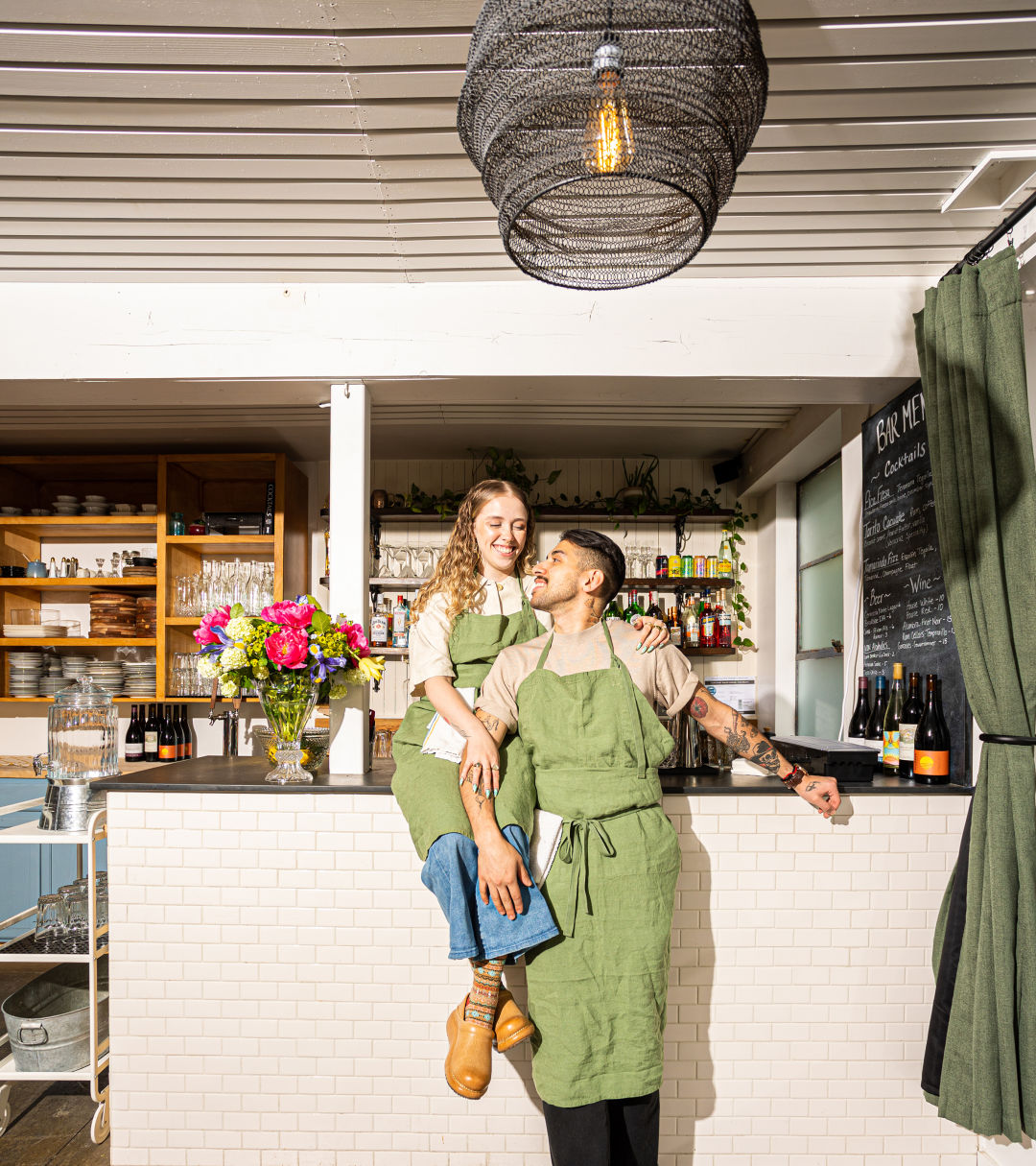
Image: Michael Novak
Those expecting the formal structure of República may be surprised, however: Lalo and Kautia want Metlapíl to feel more casual, a summery spot to eat seafood at communal tables, akin to the mariscos restaurants of Mazatlán. Menus will change day-to-day, depending on both the seafood and the corn available—Lalo will source heirloom corn from Masienda and other vendors, starting with Blue Cónico and Pink Xocoyul.
Kautia, a practicing therapist and an alumna of the celebrated panadería Alebrije in San Antonio, Texas, will make the pop-up’s desserts, nostalgic helados (ice creams) with varieties such as mamey, cotija, and hoja santa, or Mexican pepperleaf. She’s particularly excited about a version of an affogato: canela and orange peel ice cream, finished with a tableside pour of café de olla.
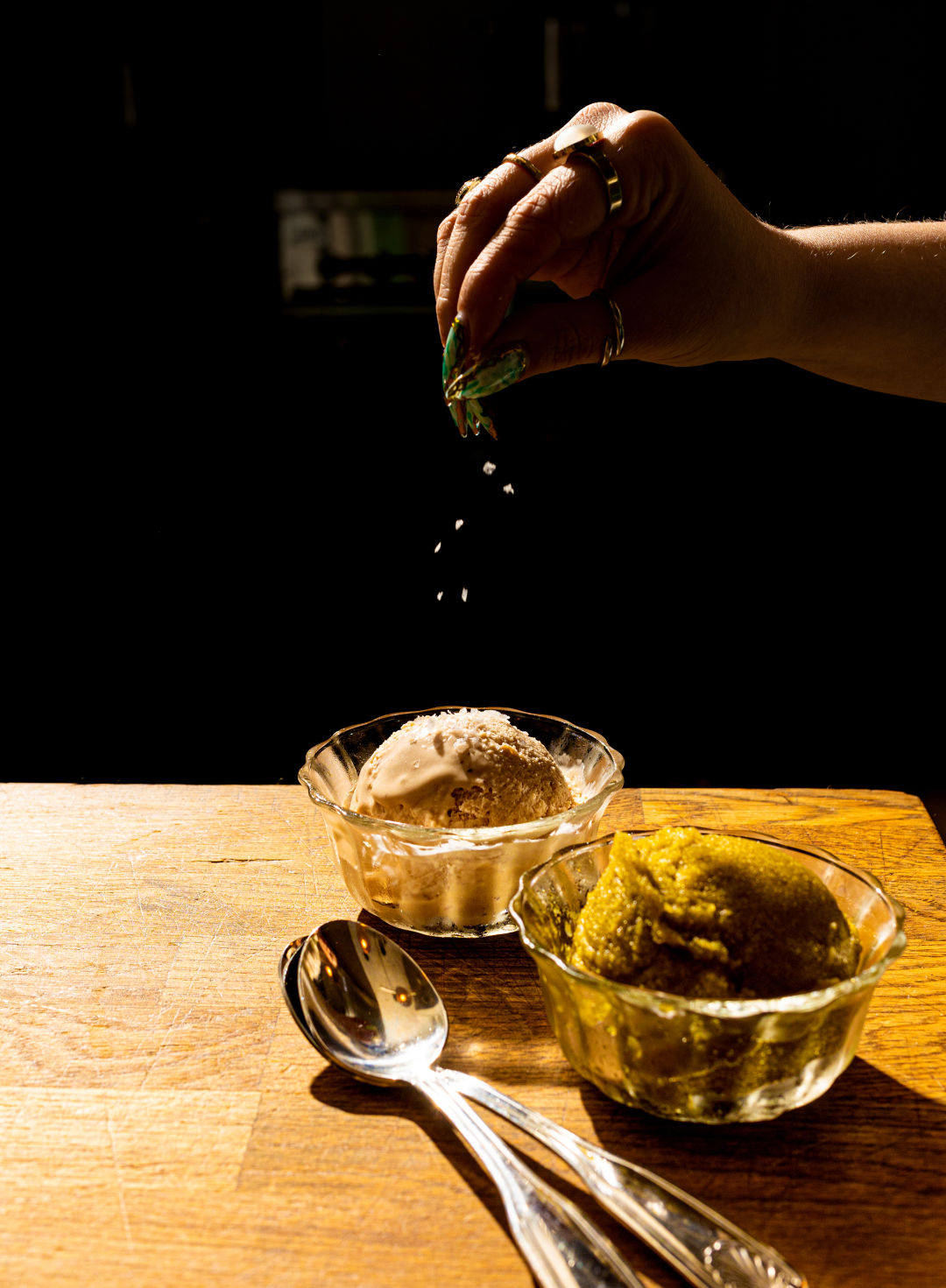
Image: Michael Novak
While Metlapíl will open with à la carte service, the Camarenas plan on adding ticketed, multicourse dinners within a few weeks of opening, on Fridays and Saturdays. On Sundays, Metlapíl will stay open until 1am with a special late-night menu, with things like tostilocos with ceviches, smaller aguachiles and tostaditas. The couple chose Sundays for late-night service thinking of restaurant workers, who often have days off between Sundays and Tuesdays. Community-oriented events will be a crucial part of Metlapíl: The Camarenas have mentioned pay-what-you-can cooking classes with an emphasis on reducing food waste or grocery costs, as well as summertime block parties. “There’s no shortage of spaces that are meant for BIPOC or LGBTQ+ people by any means, but we wanted to do that more actively,” Lalo says. “We wanted to bring people back onto the street in Portland.”
